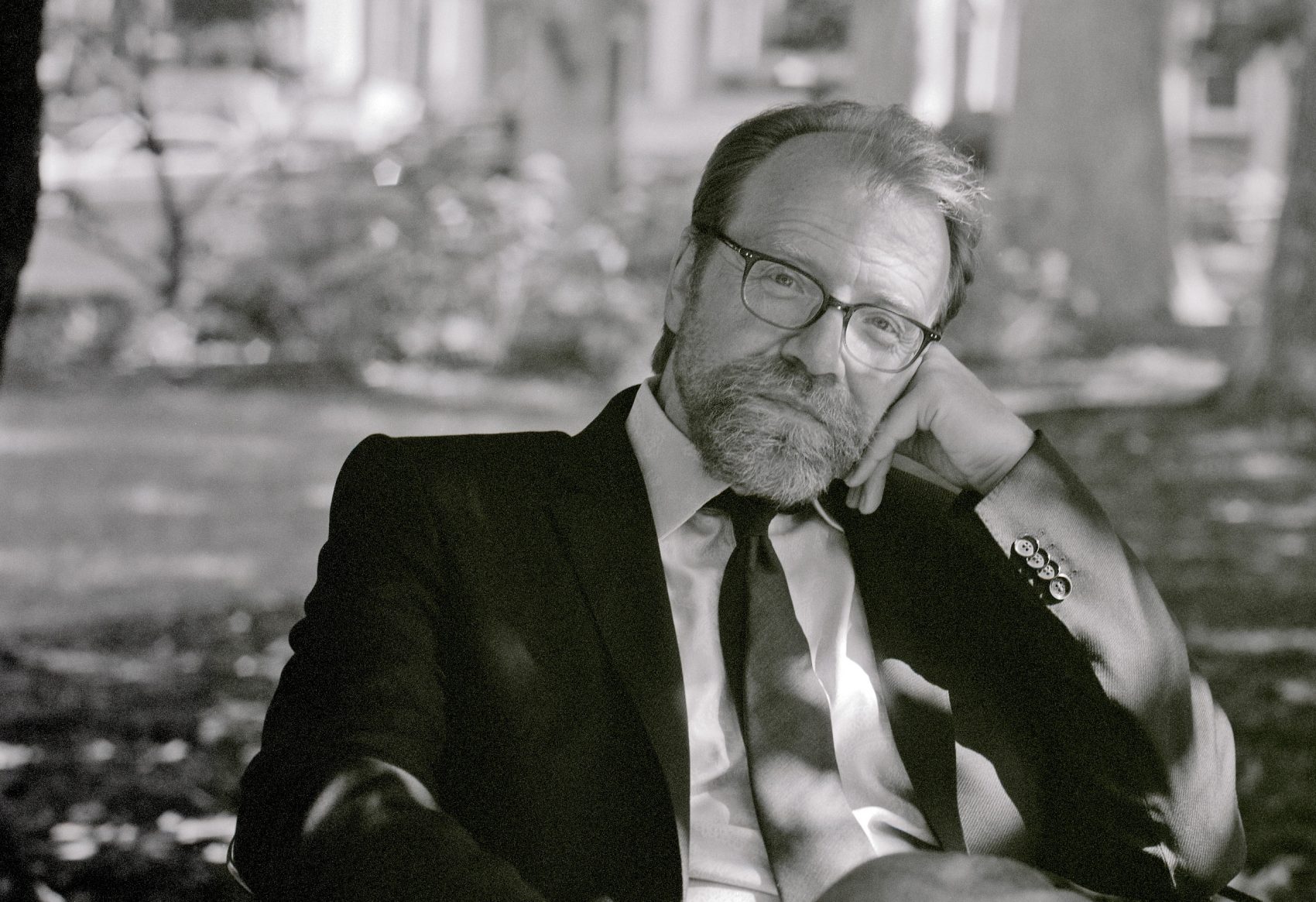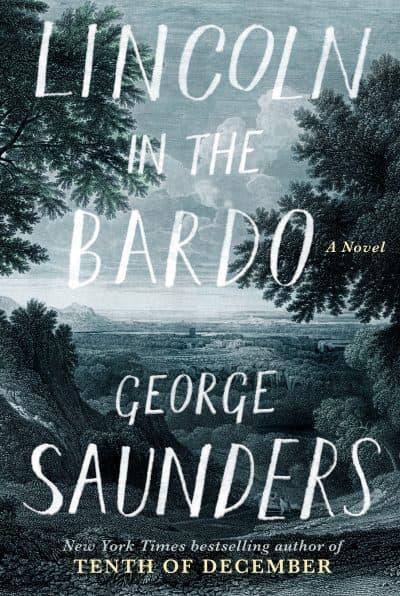Advertisement
George Saunders' 'Lincoln In The Bardo' Goes Inside Our 16th President's Mind At A Pivotal Moment

In the winter of 1862 America was convulsed by the early battles of the Civil War. Inside the White House, President Lincoln and his wife, Mary, were wracked with grief over the death of their 11-year-old son Willie. In the weeks after Willie’s death, newspapers reported that Abraham Lincoln returned by night to Oak Hill Cemetery in Georgetown to remove his dead son from his casket, to once again hold him.
From these historical accounts, George Saunders (who's at Harvard Book Store Friday, Feb. 17) has created "Lincoln in the Bardo," an extraordinary work of fiction and a shatteringly intimate portrait of grief.
The Buddhist concept of bardo signifies a transition state between this life and the next, and can also mean an interrupted time in one’s earthly life. In "Lincoln in the Bardo," it encompasses both. The story takes place during one pivotal night in February 1862 when Lincoln visits the cemetery’s chapel and grounds, and also, unknowingly, the astral realm overlaying this physical space, inhabited by a distinctive and wildly diverse community of spirits caught in this halfway world.
Depending on the course of their earthly lives, these spirits may remain here for many years, but children usually linger less than an hour. That is why it’s a surprise when young Willie Lincoln does not quickly disappear. He tells the assembled crowd, “I am to wait.”

What is perhaps most remarkable about “Lincoln in the Bardo” is that it dissolves the traditional structure of long-form fiction: Saunders tells the story entirely in individual voices. There are chapters of dialogue between fictional characters, and chapters of real-life accounts, with quotes exquisitely chosen, from journals, letters, essays. No singular character or omniscient speaker provides narrative glue; only Saunders’ peerless authorial guidance. The result is an expansive literary work that resides somewhere between a novel and a play.
There is an apparently endless supply of books on our 16th president and the Civil War, and Saunders has done deep research into this rich trove. The spirits who dwell in this Georgetown cemetery range from respectable businessmen to slaves to drunkards to a reverend who, having been there the longest, is the de facto elder statesman. Here might be a good time to note that while the bardo sounds similar to the Christian concept of purgatory, it is not. Unlike purgatory, where you remain for a designated time on your eventual path to heaven, your exit from the bardo may take you to paradise or to perdition.
Advertisement
These residents are not simply roaming the graveyard at night as ghostly images of themselves. They change shape to depict the pain or joys they carried in their previous lives. A man who thought and felt deeply has multiple eyes and hands; the reverend has a perpetual look of open-mouth horror, even in casual conversation. The visuals are commented on in passing; business as usual in this dimension.
Saunders, a 2006 MacArthur Fellow, is the award-winning and bestselling author of seven works of short fiction and two nonfiction books. “Lincoln in the Bardo” is his first novel, but he brings a lifetime of writing experience to it, reflected in sharply observed, witty passages.
In the history-based chapters, Saunders demonstrates a shrewd and sensitive ear attuned to just how long a quote to include for maximum impact. Divergent assessments are offered of Abraham the man: homeliest man ever; not homely once he begins talking; loving father; too-lenient father; ambitious politician. You’re allowed to draw your own conclusions. When opinions are offered on the Lincolns’ decision to go ahead with a state dinner while their son was so ill with fever, Saunders deftly reveals the impulse, in even the most smug accounts by those who swore they’d do things differently in their family, to distance oneself as far as possible from tragedy. As if focusing on possible missteps can guard against life’s random, dreadful cruelties.
Saunders’ writing is so clear and so true that in the chapters where Abraham (never Abe) is a fictional character, you feel almost hesitant to intrude so deeply on a parent’s grief. There he is, in the cemetery and, with assistance from those spirits, you are inside his head and inside his splintered heart. It is devastating.
And then Saunders pulls the lens back, and Lincoln’s individual sorrow is set among the thousands of young men dying in that bloody war. Over the course of that night, aided by spirits he cannot see but comes to feel, Lincoln transforms his own grief into a steely resolve to end the Civil War as quickly and forcefully as possible, even though it will also mean a greater loss, in the short term, of more lives.
Like any great fiction, Saunders’ interpretation of the real, the historical, the bardo takes you farther, to a more knowing emotional place. If there was ever a book that validates the belief to read fiction for empathy, for understanding, for widening your world view, “Lincoln in the Bardo” is it.